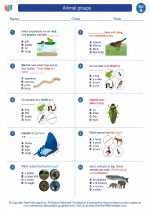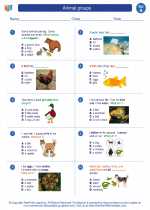Wind Patterns
Wind patterns are the result of the uneven heating of the Earth's surface by the sun. As the sun heats the Earth, different regions become warmer or cooler at different rates, creating variations in air pressure. These pressure differences cause the movement of air, resulting in various wind patterns around the globe.
Global Wind Patterns
There are three primary global wind patterns: the trade winds, the westerlies, and the polar easterlies.
Trade Winds
The trade winds are steady easterly winds that flow towards the equator from the northeast in the Northern Hemisphere and from the southeast in the Southern Hemisphere. These winds are caused by the Coriolis effect and the pressure difference between the equator and the subtropical high-pressure zones.
Westerlies
The westerlies are prevailing winds that blow from the west to the east in the middle latitudes between 30 and 60 degrees latitude. These winds are responsible for many of the weather movements across the Earth's surface.
Polar Easterlies
The polar easterlies are dry, cold prevailing winds that blow from the east to the west near the North and South Poles. These winds are formed as the cold, dense air near the poles sinks and flows towards lower latitudes.
Local Wind Patterns
In addition to the global wind patterns, there are also local wind patterns that are influenced by factors such as topography, temperature variations, and bodies of water. Some examples of local wind patterns include sea breezes, land breezes, mountain breezes, and valley breezes.
Study Guide
- What causes wind patterns to form?
- Identify and describe the three primary global wind patterns.
- How are local wind patterns influenced?
- Explain the Coriolis effect and its role in shaping wind patterns.
- Discuss the impact of wind patterns on local weather and climate.
Understanding wind patterns is essential for comprehending weather systems and climate variations across the planet. By studying the causes and characteristics of wind patterns, we can gain insights into the complex dynamics of Earth's atmosphere.
[Wind Patterns] Related Worksheets and Study Guides:
.◂Science Worksheets and Study Guides First Grade. Animal groups

 Worksheet/Answer key
Worksheet/Answer key
 Worksheet/Answer key
Worksheet/Answer key
 Worksheet/Answer key
Worksheet/Answer key
 Vocabulary/Answer key
Vocabulary/Answer key
